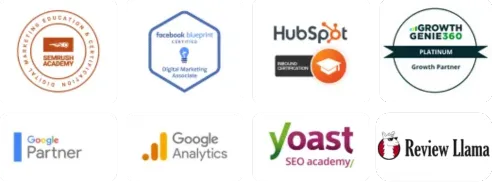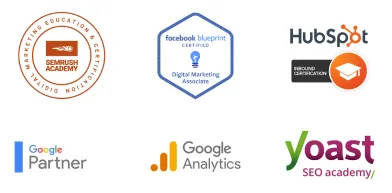TO LEARN IS TO GROW
Learning Center
We do our research and publish our results. Should probably call this the Growing Center.


Hyperlocal Content: Market Your Business Online Guide
More and more local businesses are learning about using hyperlocal content to compete with the digital market. How do you create effective content, and how can you use it for hyperlocal marketing?
When you create content for marketing purposes, you create it with a specific purpose and target market. However, when you use a hyperlocal content strategy, you’re targeting customers in a highly specific and restricted area.
Writing effective hyperlocal content means you are creating geo-specific content that aims to help your audience with a particular concern unique to him or her.
For instance, if you wish to promote your restaurant’s new neighborhood food delivery service online, you first need to keep your target audience in mind before writing content. Your tone and the information you present will vary considerably depending on you who are speaking to.
Once you’ve narrowed down your audience, you need to think about what you want them to understand from your article.
Do you want to show them your menu or, say, your house specialty or promos?
Is it your goal to paint a better picture of what your food or delivery service is all about?
Do you wish to win over new fans and followers with anecdotes about you and your business?
Do you think science and numbers will impress them more?
Do you want to show customers how to get to your establishment?
Writing content without a purpose is a recipe for disaster. On the contrary, if you create content to serve a specific audience’s needs – or better yet, a problem they didn’t know they have – there’s a good chance you’ll be hitting your revenue goals and increasing web traffic in no time.
Hyperlocal Content and Marketing
Hyperlocal marketing refers to the method of targeting potential customers in a highly specific, geographically restricted area.
These areas can cover cities and districts, but sometimes it can even hone in on a specific block or street. The goal of hyperlocal marketing is to attract people who use the “near me” keyword to search for products and services in the area.

By focusing on a particular audience within a well-defined location, you are able to identify their specific needs and tailor your content to provide the necessary solutions to their concerns. That is exactly what hyperlocal content aims to do.
Take for example a person in Sacramento, California who’s craving for empanadas. He will either visit the empanadas shop closest to him or the one that sells his favorite kind of empanada.
Suppose in the unfortunate case that his first option is closed, he’s going to take out his phone and manually search for the nearest open shop that sells empanadas.
Remember: people value time and convenience a lot, and walking to a nearby cake shop (selling a similar product) is often better than traveling for another hour to get the same kind of empanada at a different branch (which could be two towns or a city away).
Hyperlocal marketing banks on that person’s preference to go for what’s nearer.

Why You Should Use Hyperlocal Marketing
Searches that utilize the “near me” keyword has risen in popularity recently. In fact, searches that included the keyword were so high in volume that technology had to adjust for the consumers.
Although many people still type “near me” when searching on the internet, most search engines now provide location-based search results even if the user did not necessarily ask for the nearest businesses.
The developed need to search for the nearest products or services represent a significant shift in how customers value geolocation, and it also impacts the ways in which businesses can take advantage of location data to drive traffic.
How to Create Effective Hyperlocal Content
Effective hyperlocal content means being able to scale local content to resonate in multiple markets. To do this, your content needs to be optimized for better visibility and customer satisfaction.
The following are a few tips on how to create ideal hyperlocal content:

1. Make sure your content is really hyperlocal.
You can’t make an effective hyperlocal post if your content was not hyperlocal in the first place.
Examples of good hyperlocal content:
Put a local spin on your current content by writing about products and businesses that are specifically found in one location. Invest in the unique features of a particular place.
You can write a blog article about how a certain business regularly participates in a local event
You can discuss the history of a local tradition or festival
You can create content to share the local music of your small town
You can write about the hospitality and warm welcome the local residents of another district are known for.
Every place has its own history and culture, and you shouldn’t have any problem finding something to write about.

2. Use location-based keywords.
Since hyperlocal marketing is strongly influenced by location, you need to ensure that your content includes location-based keywords so that consumers can better identify where you are and get routed to you correctly if the search parameters include your location.
Try to use more neighborhood-specific keywords. You can use locally-recognized street names, historical locations, and other popular landmarks to make sure proper geotagging is done.
Don’t hesitate to use landmarks and popular places near you for better hyperlocal data. By placing more keywords to mark specific locations on the internet, you are increasing your chances of being ranked higher in local searches.

3. Connect with local businesses.
Don’t hesitate to reach out to local businesses that share the same target audience as your blog.
By striking a partnership with a local shop, you can both better serve your customers and readers by offering and writing about packages and promotions.
Featuring a business on your page can also increase your traffic depending on how popular the business is.
Having a good relationship with a local business also allows you potential insider information in that area.
For instance, if an important local event is being planned, there’s a good chance you receive that information in advance so you can work with your partner company to create the necessary content.
If your readers are able to connect with your featured business through you, you can become an important bridge in the community. When people look to your blog for connections, you know you’re doing something right.

4. Optimize your blog posts for SEO
Blogging is a good way to utilize search engine optimization (SEO). By creating helpful content that can answer your reader’s questions or help them solve their problems, you are increasing the chances of people visiting your page.
Since your content is hyperlocal, it means you are writing about things that are specific to one area only.
That works well with SEO because it allows you to narrow down the potential problems of your target audience to one location.
Once you identify what your readers need, you can provide better content because you’ll know exactly how to help them.
How to Write a Blog Article Using Hyperlocal Content
Once you’ve designed your own personalized layout for your blog, it’s time to focus on writing content. Here is a step-by-step guide you can follow to make sure your blog content is useful and hyperlocal:
1. Come up with a unique idea that serves your target (local) audience.
Thinking of what to write about is usually the hardest part of blogging, so you might need some time before a good idea comes to you.
When trying to come up with a unique idea, it’s advisable to consider your target audience. Think about what they want to read about, and what topics might help them in their daily lives.
Once you have that thought, make it more interesting by adding hyperlocal details. For instance, if your target audience consists of people who are into a specific cuisine, writing about the top ten foods in that style of cooking can be considered good content.
However, writing about the top ten restaurants in a particular area that serves excellent food in that cuisine is better content, since it is more specific and useful for your readers.
2. Create a detailed outline of your content.
The next step is creating an outline to organize your thoughts in writing about your topic. You’ll need to start with an introduction to tell your readers what you will be writing about. Include a short description of your main idea and how it can help your readers.
Next, flesh out the main topic by adding subtopics that will discuss certain parts of your story further. Try to keep only the most relevant supporting details as subtopics first, since you wouldn’t want to overwhelm your audience with too much information.
Finally, summarize your thoughts in the conclusion part of your blog. Make sure to answer all the questions that you raised in the subtopics and provide a quick recap of what was discussed in each part.
3. Write your blog (using hyperlocal content.)
Once you’re outlining your ideas, it’s time to finally start writing. To improve your writing, it’s best to write with a specific purpose in mind.
For example, if you wish to tell your readers about a particular experience you’ve had, an essay-type article should do fine as long as you keep it organized. If you want to explain how they can do something better or in a certain way, a step-by-step writeup (just like this one) is ideal. If you want to inform them about the best books you’ve read or your favorite movies, a listicle might be more appropriate.
Don’t forget to make your content hyperlocal by adding location-specific keywords to give your audience a better idea of the places you’re writing about. Name the streets and landmarks that can help readers identify where things are taking place. Aside from properly geotagging your blog, these keywords can also help your audience better imagine and understand the setting of the content.
4. Review and finalize your blog post.
You’re almost done! Now, you need to review your blog content to check if anything needs to be fixed or added to improve it.
Spelling and grammar checks are absolutely necessary, as readers can get easily turned off by careless typos and grammatical errors.
After making sure that your writing is spotless, don’t forget to add images to your blog. While your content is what’s supposed to keep the readers on your page, images are a great way to attract them and initiate contact.
Images are also a good way to quickly let people know what your blog is about, and if they like what they see, they’ll visit your page and read your blog. You can keep your images hyperlocal too by making sure the photos are geotagged properly to the correct locations. Make sure to choose the most accurate images for your content, as visual representations are crucial in blogging.
5. Make sure your post is properly optimized.
Writing a good blog post is only half of the battle. To successfully publish a blog post, you also have to make sure your content is optimized for SEO, or search engine optimization.
SEO is important in making sure your blog entry comes up in the users’ search results. You need your post to be visible on the internet so that people would know it exists. They can’t read your posts if they aren’t aware of it, so learning how to optimize your post by using strategic keywords, URLs, and titles are essential in increasing your blog’s online presence.
The title of your blog post should also be SEO-optimized.
Aside from being catchy enough to draw the attention of readers, your title should also utilize keywords relevant to what your content is about to help search engines better identify it for sorting.
Putting a specific location on your title is a simple but effective technique to optimize it for SEO by adding hyperlocal data for improved search impact.
6. Publish!
Now that you’re done optimizing your blog post, you can finally publish it! Give yourself a pat on the back for a job well done!
Of course, blogging doesn’t end after publishing a single post. Your readers will expect more content from you, so you should think about a schedule for posting as well.
Consider your own pace when creating a posting schedule, such as how long it can take you to write a post.
It’s alright to publish posts once a week if that’s what you’re more comfortable with. The important part is sticking to your chosen schedule so that your readers can also stay committed to your blog.
Remember: consistency is the key in posting to make sure that your readers know what to expect from your blog.
A Final Word on Hyperlocal Marketing
Hyperlocal marketing is shaping up to be a powerful tool in increasing brand awareness.
Not only has customer interest in local search grown significantly, but more people now expect their location to influence their search results even without them asking.
The combination of Google’s added importance on local searches and the consistent dependence of customers on search engine technologies have made hyperlocal marketing an effective strategy for local businesses trying to attract more customers.
With this strategy, local shops have a better fighting chance against larger commercial businesses with brands built on national recognition.
Built for Growth. Backed by 25 Years of Trust.
For over two decades, LOJO has been a trusted partner to hundreds of businesses just like yours. Whether working directly with owners, managers, teams, or boards of directors, our goal remains the same: to be a reliable and results-driven asset to your business.
Over the years, we’ve carefully built a team of experts—each selected for their unique skills, strengths, and personalities. Our clients choose LOJO because they know we genuinely care about their success.
And after 25 years of helping businesses grow, we’re more committed than ever.


Built for Growth. Backed by 25 Years of Trust.
For over two decades, LOJO has been a trusted partner to hundreds of businesses just like yours. Whether working directly with owners, managers, teams, or boards of directors, our goal remains the same: to be a reliable and results-driven asset to your business.
Over the years, we’ve carefully built a team of experts—each selected for their unique skills, strengths, and personalities. Our clients choose LOJO because they know we genuinely care about their success.
And after 25 years of helping businesses grow, we’re more committed than ever.




Matthew Rogers, President
iProspect Check
After spending several months reviewing multiple proposals from several different companies we engaged LOJO to develop a new website that represents our company effectively. We worked initially with Stephen Platte who helped create the scope of the project. Stephen was knowledgeable and always followed up with me on time and as promised.
He "closed the deal" for LOJO with his professionalism, service orientation and easy going approach. Once we signed the contract we were introduced to Jay Kelly who would be the creative lead for LOJO. This was the most challenging part of the project for my company, as there was no shortage of ideas from our side. Jay managed the project flawlessly, and once we had all agreed to the design, Jay introduced us to Eric.
Eric Lay is one of the founders of LOJO. Eric took the design we had developed and brought it to life. We delivered content as quickly as he requested it. Eric kept the project on task and we responded by exceeding every deadline for content. In turn, once provided, literally not a day went by that Eric didn't add the content and take the next step. In just a few weeks we launched our new website. Eric is a pleasure to work with.
His positive attitude and consultative approach really enhanced the experience and made a big difference for us in the outcome of our project. We would welcome you to visit our website to take a look at the quality work of LOJO. We are very pleased with LOJO and look forward to working with them in the future as we pursue an aggressive SEO strategy."
After spending several months reviewing multiple proposals from several different companies we engaged LOJO to develop a new website that represents our company effectively. We worked initially with Stephen Platte who helped create the scope of the project. Stephen was knowledgeable and always followed up with me on time and as promised.
He "closed the deal" for LOJO with his professionalism, service orientation and easy going approach. Once we signed the contract we were introduced to Jay Kelly who would be the creative lead for LOJO. This was the most challenging part of the project for my company, as there was no shortage of ideas from our side. Jay managed the project flawlessly, and once we had all agreed to the design, Jay introduced us to Eric.
Eric Lay is one of the founders of LOJO. Eric took the design we had developed and brought it to life. We delivered content as quickly as he requested it. Eric kept the project on task and we responded by exceeding every deadline for content. In turn, once provided, literally not a day went by that Eric didn't add the content and take the next step. In just a few weeks we launched our new website. Eric is a pleasure to work with.
His positive attitude and consultative approach really enhanced the experience and made a big difference for us in the outcome of our project. We would welcome you to visit our website to take a look at the quality work of LOJO. We are very pleased with LOJO and look forward to working with them in the future as we pursue an aggressive SEO strategy."

Matthew Rogers, President
iProspect Check
The team at LOJO were wonderful to work with. They are well organized and very patient as we worked through our marketing strategy and developed a well thought out and clear action plan at a reasonable price. We will definitely be back for our future campaign needs."

Jon Crosby, Founder
Dazil

